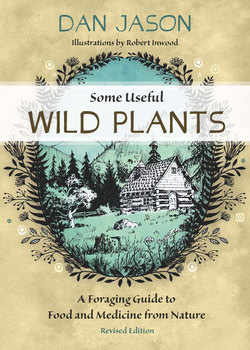Читать книгу Some Useful Wild Plants - Dan Jason - Страница 16
На сайте Литреса книга снята с продажи.
ОглавлениеBurdock
Arctium spp.
Asteraceae
Burdock is common in moist, exposed areas and near and around buildings. It has a thick stem with many branches. The leaves are very large and woolly underneath. Flowers are bristly and purplish. By fall, the top of the plant is covered with hard, round and very sticky burrs.
The young leaves and shoots can be cooked as greens or eaten raw, but they are not very palatable. The young stems and flower stalk can be peeled down to the pith and included with the leaves. The root, too, is edible if one wants to go to the trouble of peeling away the tough rind. It can also be roasted and ground as a delicious coffee substitute.
Medicinally, burdock is used as a tonic and a blood purifier. Some authors recommend it for skin conditions like eczema and syphilis, and externally as a salve or a wash for skin irritations or burns. A leaf infusion tones the stomach, serves as a mild laxative and may help long-term indigestion. For severe pain, one author recommends bruising and rolling up the green leaves, dipping them in hot vinegar and covering the skin with them and a hot woollen cloth.
Burdock’s chemical constituents include inulin, tannic acid, vitamin C, iron and niacin.
Burdock
